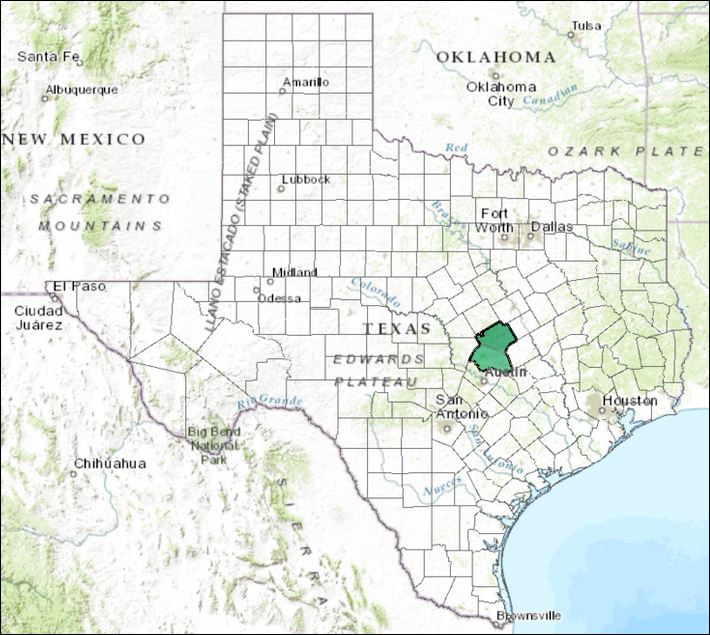By Jim Ellis
Sept. 26, 2018 –For the first time since his original election to the House back in 2002, Texas Rep. John Carter (R-Round Rock) has drawn a top-tier Democratic challenger.
Consultant and Afghanistan War veteran M.J. Hegar (D) is giving the veteran congressman all he can handle, but a new Democratic poll finds him still hanging onto to a lead despite absorbing over $1 million in money spent opposing him.
Some of Hegar’s expenditures included financing an introductory 3:29 minute promotional video that went viral nationally and attracted well over 2.8 million views. The video, mostly about Hegar’s military career and being wounded in action, her life after the service, and the battle to allow women in combat, also created a fundraising bonanza.
Much of the money was used to tangentially hit Rep. Carter because Hegar first had to clear a four-person Democratic primary and run-off, an election that saw her placing first in the primary (44 percent), and then scoring a 62-37 percent win in the Democratic run-off vote.
The Anzalone Liszt Grove Research firm just released their second 31st District poll and the first since July. The survey (Sept. 16-20; 500 likely TX-31 voters) finds Rep. Carter leading Hegar, 46-42 percent. In July, the congressman’s margin was 48-39 percent.
The analysis indicates that Hegar is the candidate who is moving forward because she has shaved a net five percentage points from the previous lead but, considering that her campaign has been on offense and Carter defense suggests that the race could have moved more substantially.
The ALG analysis also points out that Hegar has more room to grow because her hard and soft name identification is 60 percent. Yet, they illustrate that Carter’s 63 percent name ID is weak for an incumbent. They omit to conclude, however, that the congressman can also better define himself among the 37 percent that do not possess a clear opinion of him, more of whom are more likely to be his voters than hers.
The 31st District is a central Texas CD just north of Austin and occupies a small land area by Texas standards. The district is comprised of Williamson County, Carter’s home and a place he has represented for 36 years — 20 as a district judge and then in the US House for eight terms.
The CD’s second county is Bell, home to the cities of Temple and Kileen. TX-31 contains 89 percent of Bell County’s territory. The seat also encompasses part of the Ft. Hood Army military installation, the third largest such base in the country, housing more than 217,000 soldiers. Therefore, Rep. Carter’s chairmanship of the Military Construction Appropriations Subcommittee is a strong fit for his Army-influenced district.
But, the Army is also Hegar’s strength. With an impressive and decorated military career, the Democratic nominee has her own story to tell, and did so in authoring a book about her wartime experiences, entitled: Shoot Like a Girl: One Woman’s Dramatic Fight in Afghanistan and on the Home Front. Therefore, the military commitment of both contenders, formulated from experience in very different forms, also underscores the stark contrast between the pair.
The clear distinctions illustrated in almost every way from gender to political ideology to age to career path gives the voters here a very clear choice about which individual should represent what has historically performed as a safely Republican seat.
Carter has been the 31st District’s only representative; the seat was created in the 2001 redistricting after the 2000 reapportionment awarded Texas two additional seats. He has averaged 61.2 percent of the vote in the three elections within the current district boundaries. For his eight-term congressional career, Rep. Carter’s average victory equates to 64.9 percent since 2002, inclusive. His weakest finish, 58.3 percent, came in the last election, 2016, which is still five percentage points better than President Trump’s performance here (53-41 percent).
Turnout, as is most always the case, will again be critical. And, in this district, the participation factor varies wildly from presidential to midterm election. In 2016, more than 284,000 voters cast their ballots, up from just over 143,000 two years before. In the 2012 presidential election, a vote that saw Mitt Romney record a 60-38 percent margin over President Obama, slightly more than 237,000 people voted. Here, a higher figure in 2018 should help Hegar, but both sides have large numbers of casual voters to motivate.
Though the Democrats recruited a top echelon candidate for this race, who will do well with the many new people moving into a changing Williamson County in particular (largely from Austin), Carter’s long political history probably allows him to at least break even in the county at worst. This, coupled with what will likely be a stronger vote for him in Bell County, should earn him yet another congressional term.

